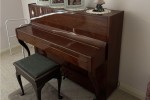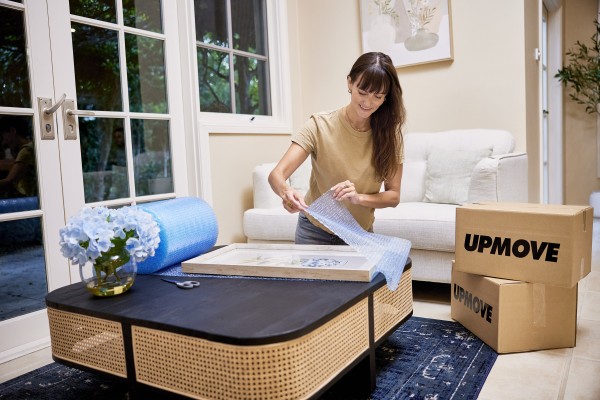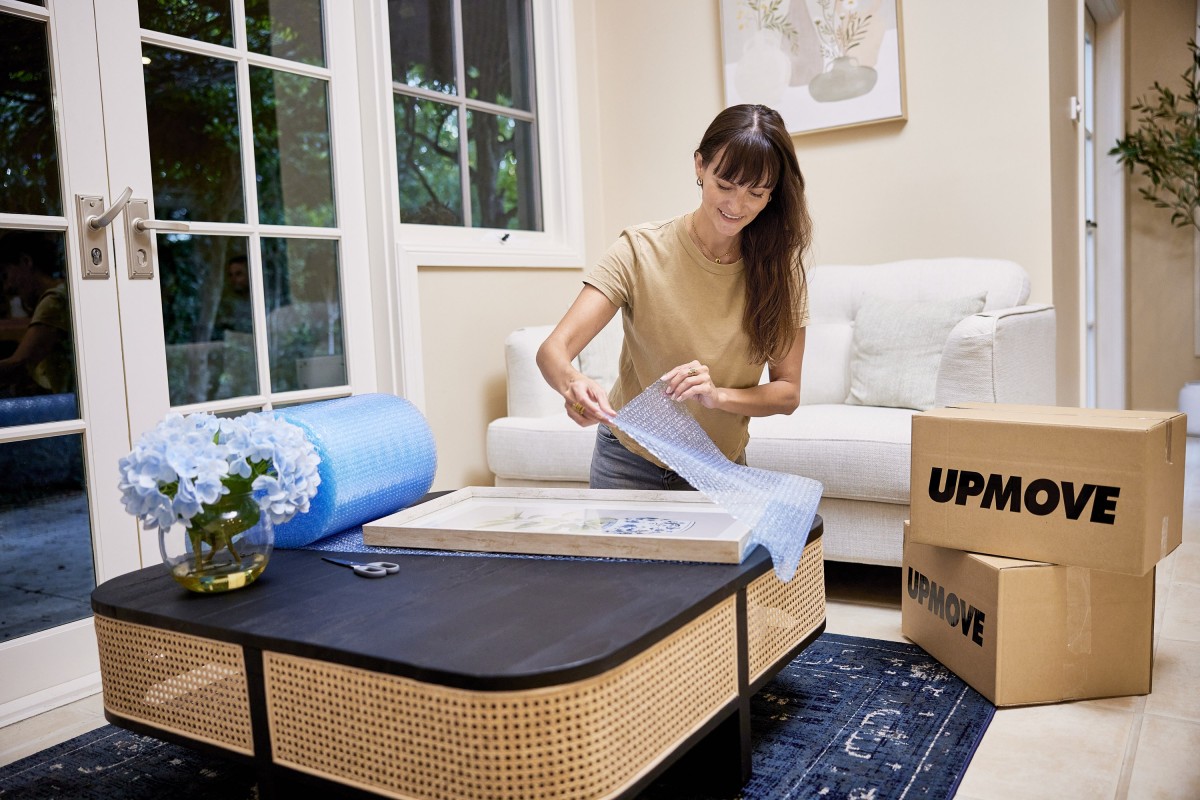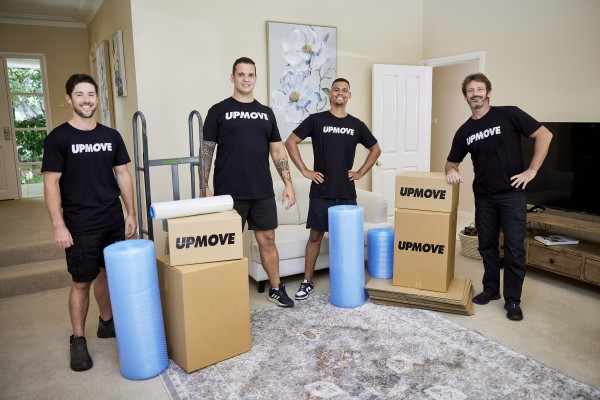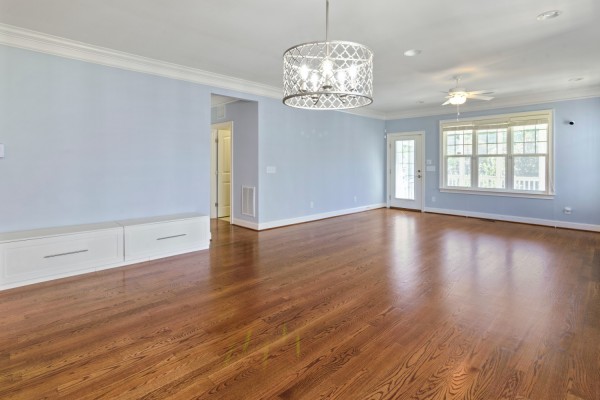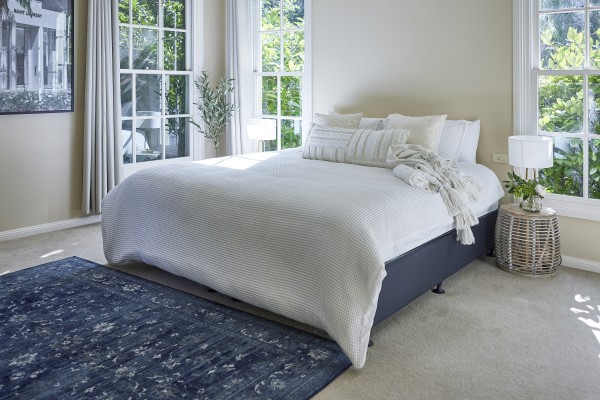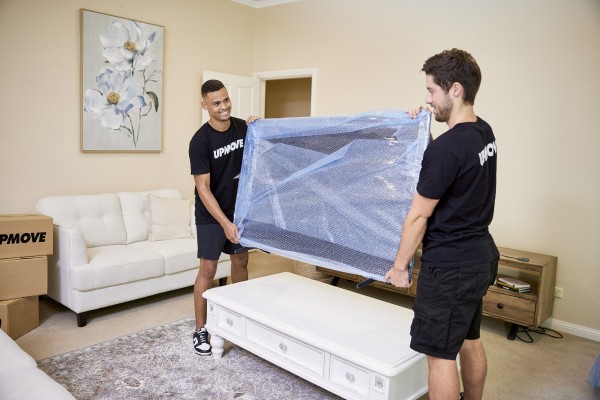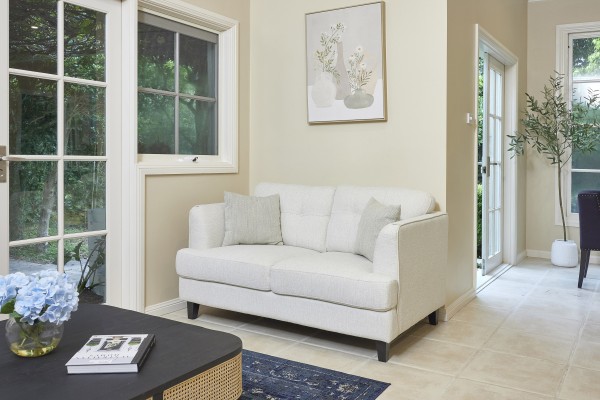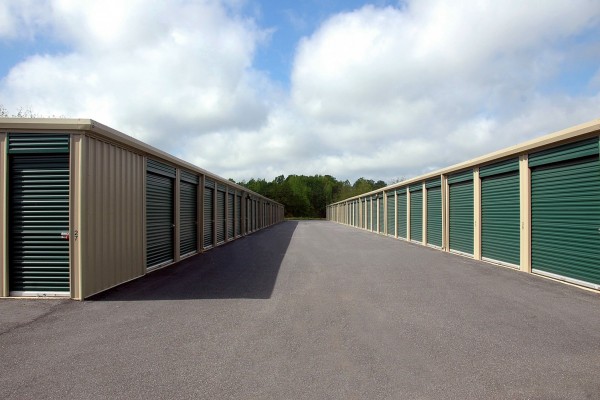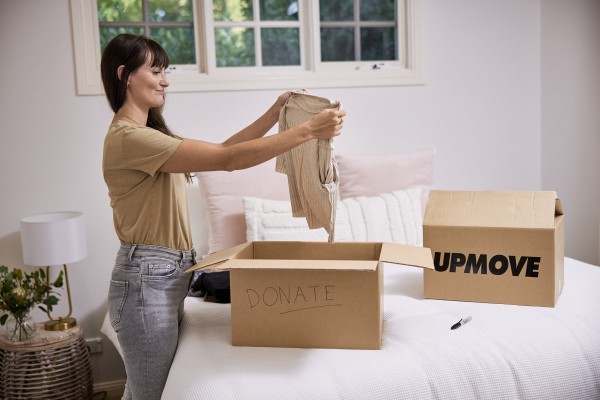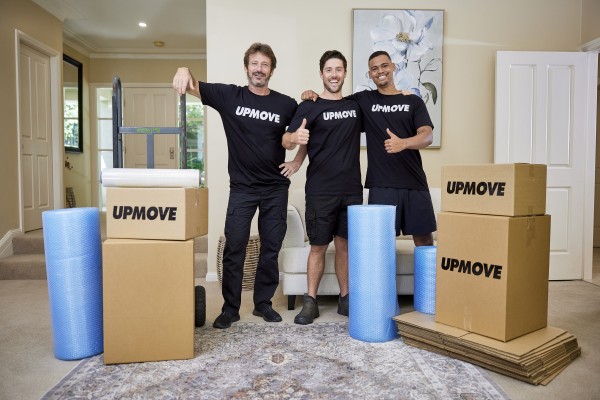What is a cubic metre?
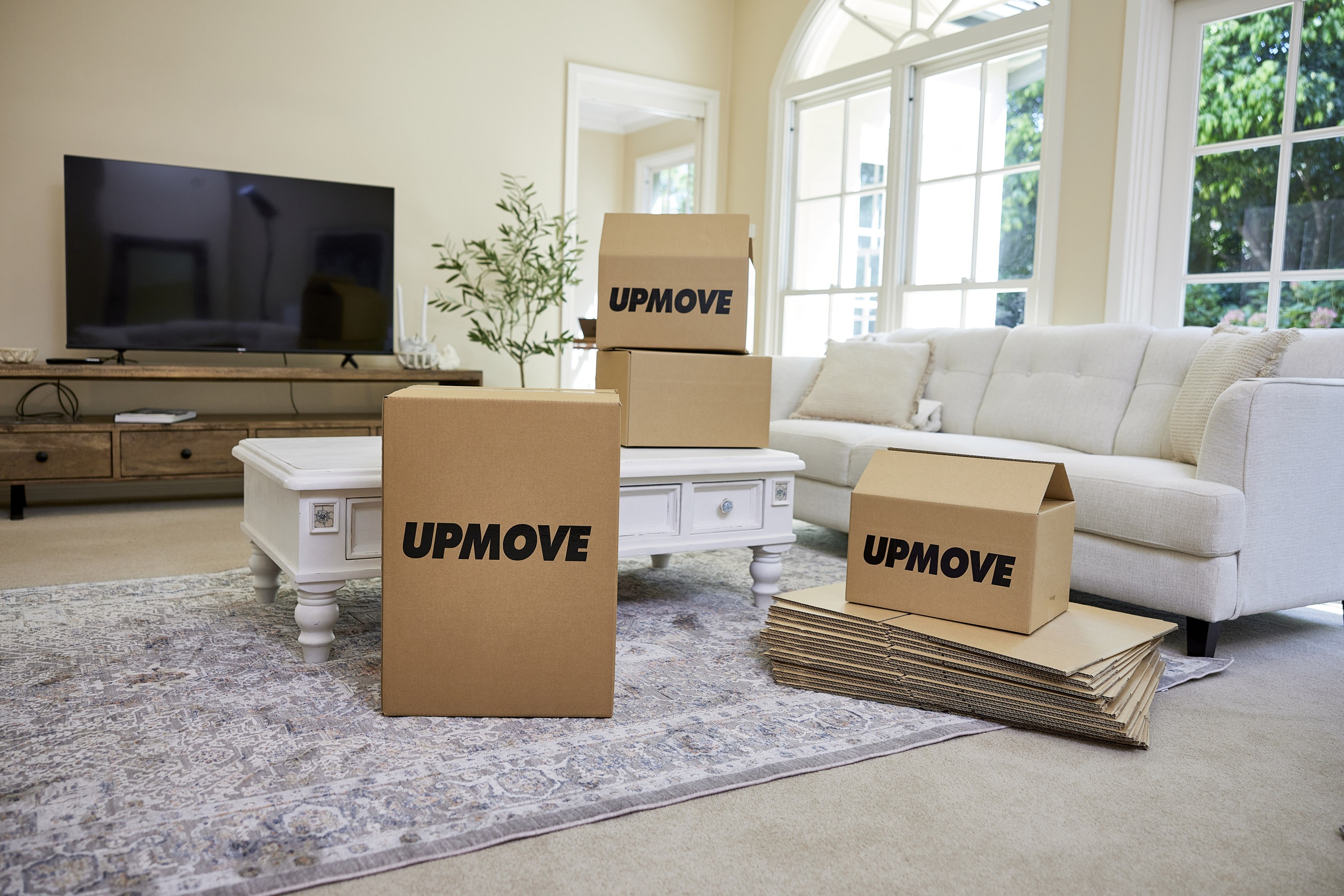
Trying to work your way through your moving inventory? Struggling to estimate how many cubic metres you might need to book for your home move? If you’ve never planned a move before, chances are you won’t have spent too much time considering the size and coverage of a cubic metre.
Cubic metres are the preferred measurement when it comes to sizing up moving vans, storage or shipping containers. Get it wrong and you could end up paying more than needed, or worse, run out of space for your belongings.
In this article we’ll explain exactly what a cubic metre is, and the best way to size up your space and book the correct number of cubic metres for your move.
What is a cubic metre?
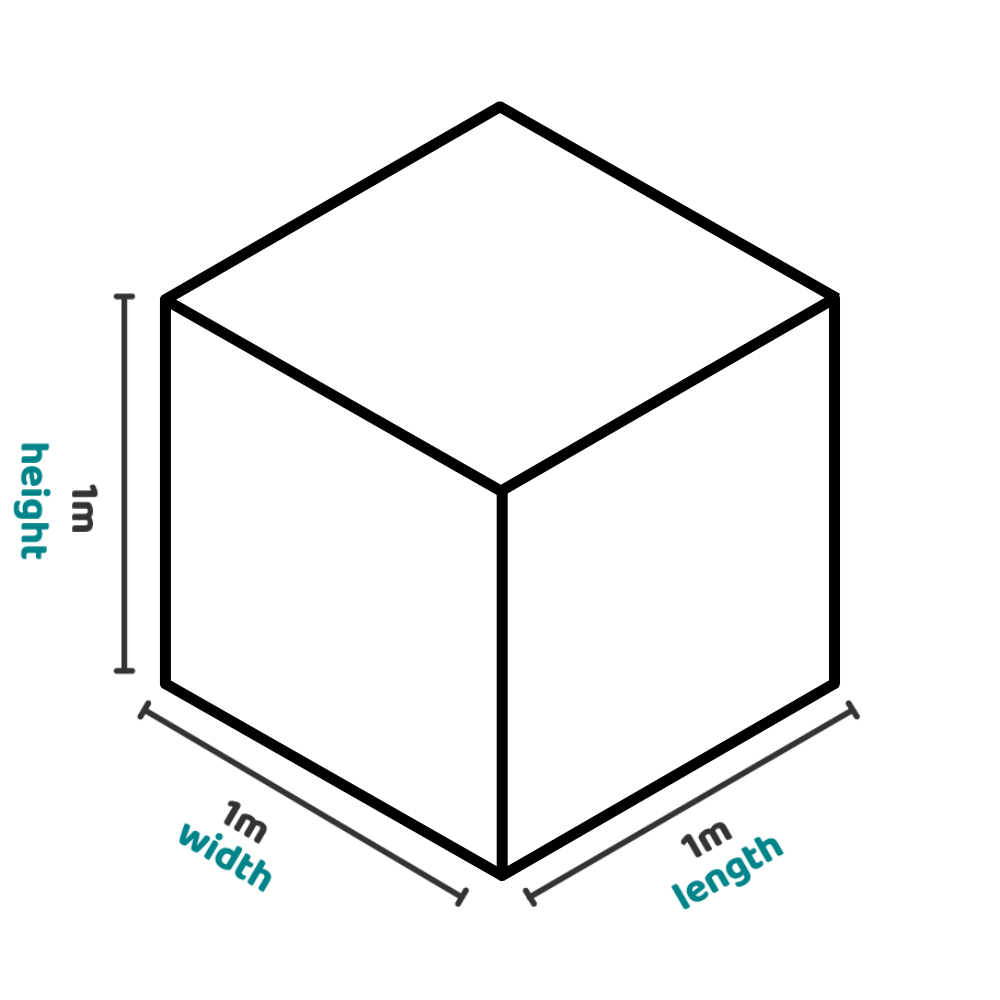 A cubic metre (m3 or CBM) represents a block of space that measures 1m x 1m x 1m. That is 1 metre in length, 1 metre in height and 1 metre in width.
A cubic metre (m3 or CBM) represents a block of space that measures 1m x 1m x 1m. That is 1 metre in length, 1 metre in height and 1 metre in width.
Calculating the amount of space in a cubic metre is easy: L x W x H. In other words, you multiply the object or piece of furniture’s height by its width and by its length.
A note on Litres. It’s fairly common to see moving boxes measured in terms of litres rather than cubic metres. Don’t worry there’s an easy conversion for this. 1 cubic metre = 1,000 litres. So 10 x 100L moving boxes is 1 cubic metre.
Cubic metres vs square metres
Square metres (or m2) is a unit of area that is two-dimensional (flat like a piece of paper) while m3 or cubic metres is three dimensional and refers to the total volume of an item or space.
Calculating cubic metres: L x W x H
Calculating square metres: L x W
Typically square metres are used when calculating the surface area eg. a how much new carpet you may need.
However, cubic metres are used for measuring 3D items such as moving boxes, the total space of a moving van or how much room there is in a storage unit.
Since cubic metres are calculated by multiplying L x W x H, and square metres are calculated L x W, cubic metres can be converted to square metres by dividing the volume by the height.
How many moving boxes fit in a cubic metre?
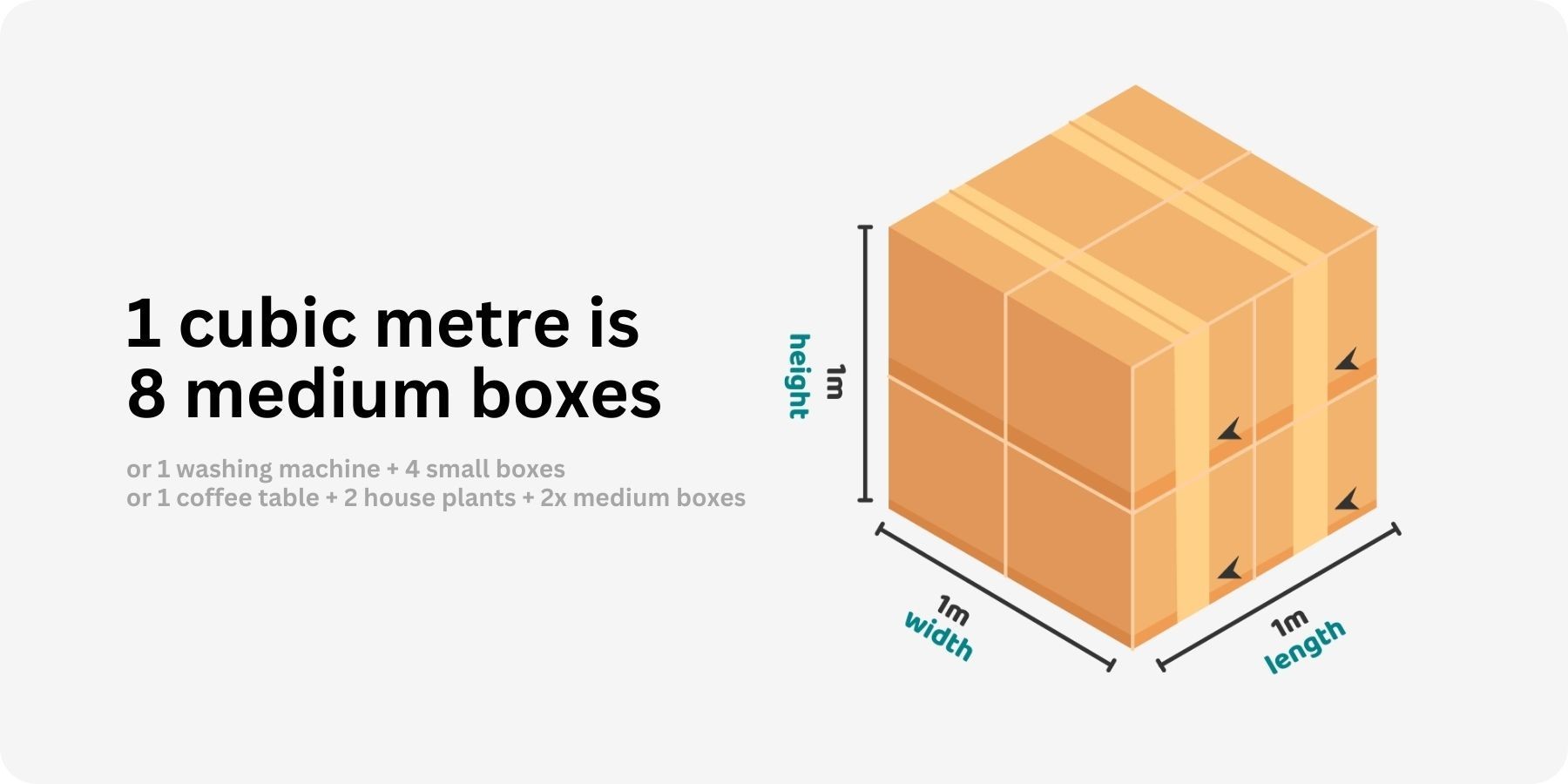
Understanding how many boxes fit in a cubic metre can help you estimate your moving needs. As a general rule of thumb, eight medium sized boxes can fit comfortably into 1 cubic metre.
Using this as a guide you should be able to calculate the rough number of cubic metres you’ll need for your boxed items when you make your move.
However, things get a little trickier when we start to consider bulky items of furniture that are odd shapes and sizes.
Since most sofas, tables, chairs, beds and cupboards aren’t shaped like a perfect cube and are unable to be stacked in the same way as boxes, you need another way to calculate the space required for these items.
Luckily, we’ve got that covered for you too.
Sizing up furniture in cubic metres
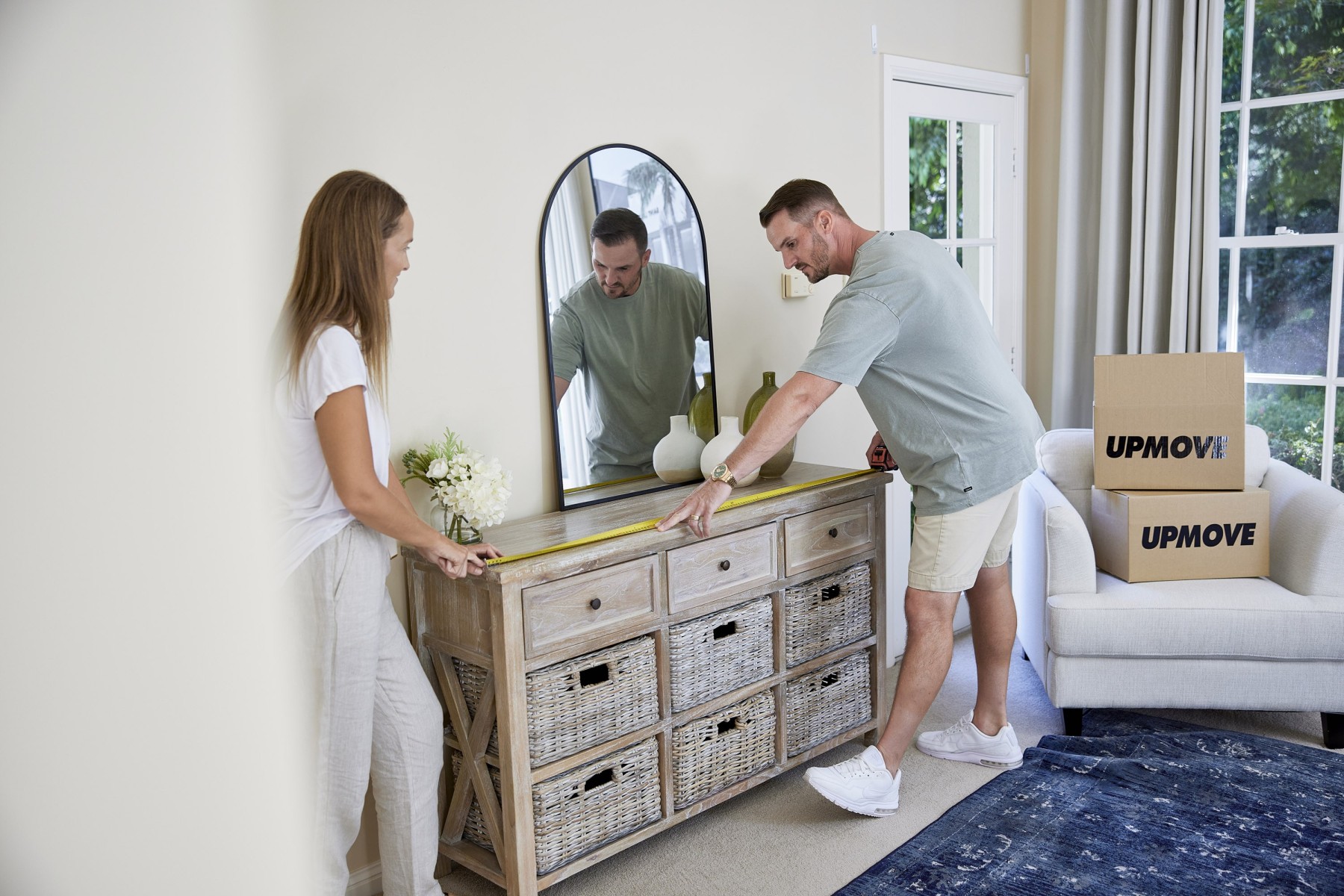
To size up your furniture and allocate the correct amount of space in cubic metres you’ll need to measure the width, length and height of each item.
Often furniture will come in unusual shapes. In this instance, simply visualise a box around the entire item and measure up the widest, highest and longest points.
A good example of this is measuring your lounge or couch.
Length = measure along the entire back of the couch to the furthest point of the arms.
Width = measure the arm of the couch all the way along to the back.
Height = measure from the floor to the top of the back including the legs.
While effective, this process can take up a lot of time depending on how much bulky furniture you own.
Cubic metre calculator
Use our specially developed cubic metre calculator below to add how much space your items will take up.
Moving truck sizes
When it comes to moving trucks, there are a number of different options to choose from. If you only have a few items to move and feel confident in doing the heavy lifting yourself, you may wish to choose a hire truck. If you have bigger size requirements or don’t wish to worry about the manual labour and risk associated with a self move, a professional moving service may be more appropriate.
Moving trucks for hire: varying sizes available from around 8m3 to 19m3.
Professional movers: Large trucks can hold up to 70m3.
Average cubic metres needed by property type
The below details the average amount of space required to move furniture and belongings based on the size of your home or property. These are provided as a rough guide only. A full inventory of all of your items should be taken into consideration before booking your moving van or professional moving service. Use our cubic metre calculator to get a guide.
| Small studio / 1-bedroom apartment | 25 cubic metres |
| 2 bedroom apartment | 25 to 30 cubic metres |
| 3 bedroom apartment | 40 to 45 cubic metres |
| 4 bedroom home | 40 to 45 cubic metres |
| 5 or more bedrooms | 50 to 65+ cubic metres |
How do I find the right moving company?
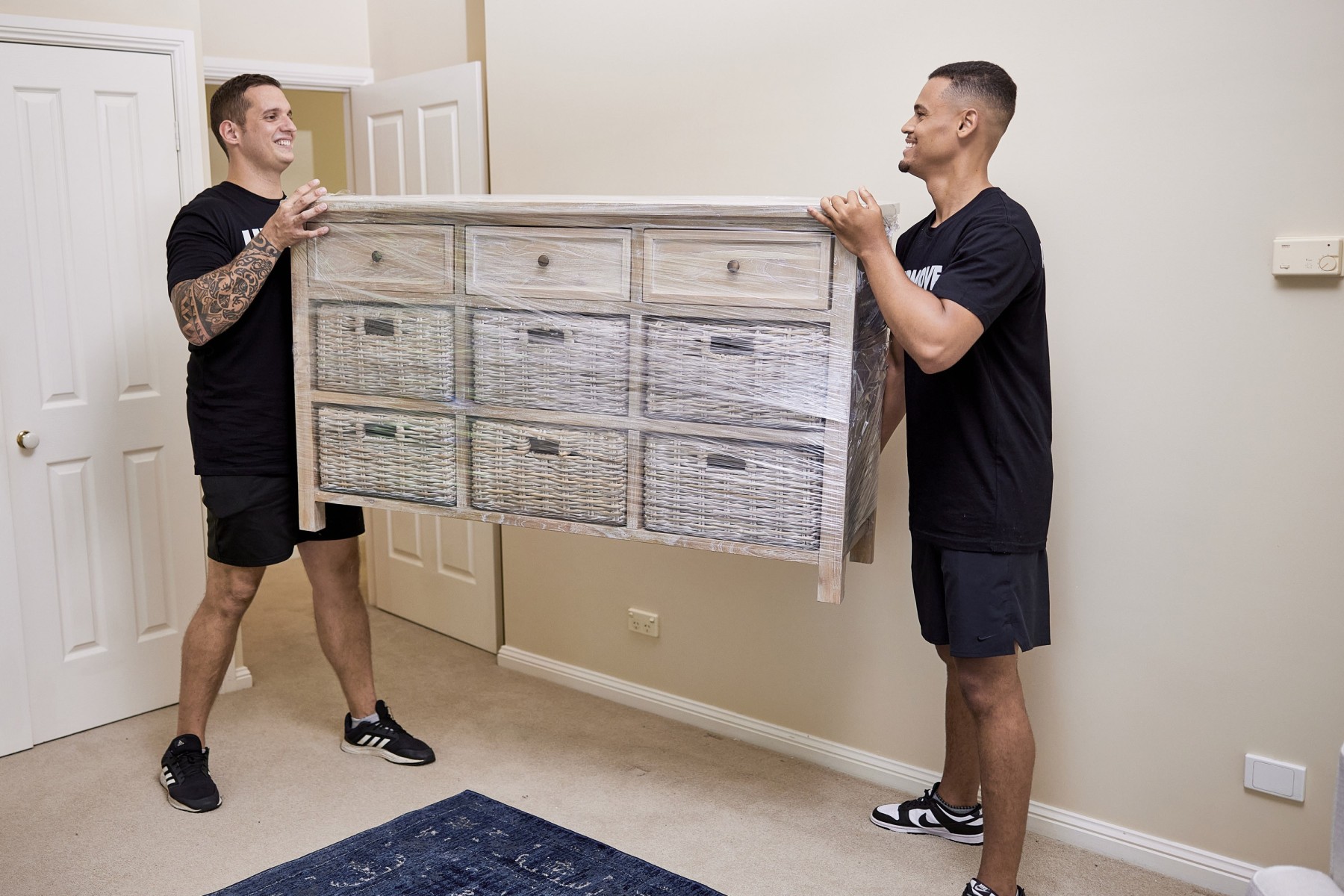
Once you’ve gotten a clear idea around moving inventory and how many cubic metres you’ll need, the next step is to find a moving service that can meet your needs and budget. Upmove offers a simple, straightforward way to connect with and compare between providers.
Every partner listed is vetted by the Upmove team to ensure the best possible experience for you.
Not to mention Upmove removalists compete for your job meaning you get the best price - keeping your delivery costs down.
What do our customers say?


